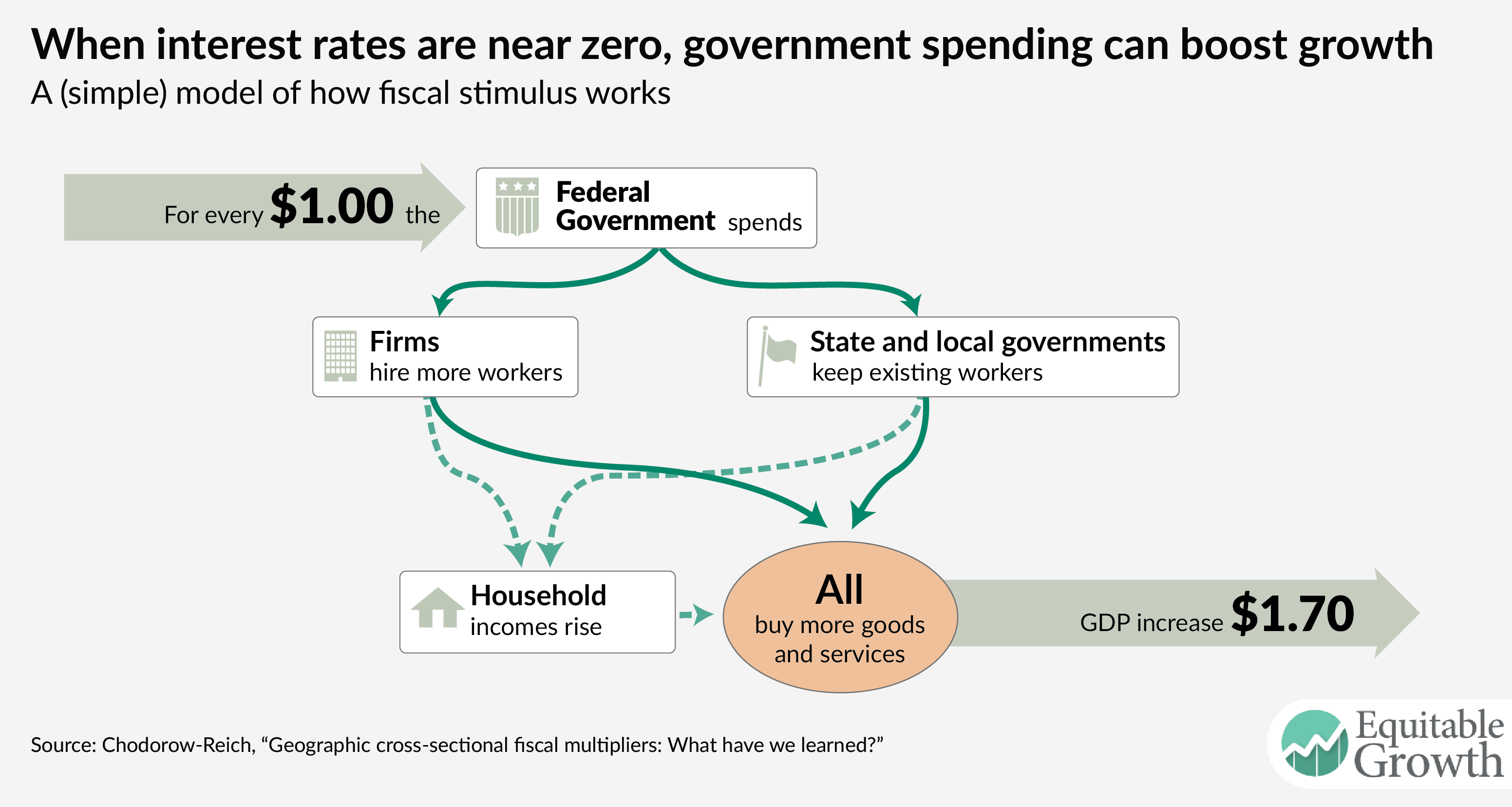Guest Post from Michael DeLong: Will Competition in Health Insurance Survive? The Odds Are Better After Yesterday
Will competition in health insurance survive?
The answer after yesterday is “perhaps”.
The federal courts, at their lowest district court level, have just weighed in on the side of more competition and fewer behemoth health insurance companies; on the side of more competition and fewer monopolies and near monopolies. This matters for consumers: monopolies are bad news, and monopolies where what is being sold is a very expensive necessity—which health insurance coverage is—very bad news for consumers, and so for societal well-being. If we are to retain a market-based health insurance system, people need effective options. A market in which there is only one insurance company, or two companies that collude to match each other’s prices, has all the bureaucratic drawbacks of a single-payer system plus all the drawbacks of a monopoly.
The federal courts have weighed in because two health insurance companies, Aetna and Humana, decided to attempt a merger to form a behemoth company. President Obama’s Department of Justice decided to challenge the merger. The case went to trial. Last December 21st the Department of Justice wrapped up its case against the $37 billion Aetna-Humana health insurance merger, arguing that it should be blocked. Why? Harm to consumers: the merger would be anticompetitive in that it would harm consumers by making them pay higher premiums and offering them fewer choices. George W. Bush-appointed federal Judge John Bates pondered how to decide this case for a month.
This case and decision is very important for the health, the well being, and the pocketbooks of all Americans who participate or will participate in Medicare. It is most immediately important for the seventeen million senior Americans who have chosen Medicare Advantage plans, which are offered by private companies and in which Medicare pays these companies to cover their benefits. The merger would create Medicare Advantage monopolies in 70 counties and harm competition in 364 counties, where Medicare Advantage serves about 1.6 million seniors, of which almost 980,000 are enrolled with Aetna or Humana. In these areas the resulting MA market would have too few insurance companies for there to be any credible curb to prices by competition.
The merger would also eliminate competition between Aetna and Humana on the public exchanges in at least Florida, Georgia, and Missouri, which would greatly reduce choice for over 700,000 people. This reduction of choice would severely impact people with low or moderate incomes, who make up a disproportionate share of the exchanges.
Judges Bates decided to block the Aetna-Humana merger. He wrote that “the Court is unpersuaded that the efficiencies generated by the merger will be sufficient to mitigate the transaction’s anticompetitive effects for consumers.” In short, he agreed with the Department of Justice’s argument that if Aetna were to acquire Humana, competition in Medicare Advantage would be greatly harmed. The Department successfully argued that people choose Medicare Advantage because it offers them (given their particular circumstances) a much better deal than traditional Medicare. Medicare Advantage plans, like normal Medicare, cover doctor and hospital visits. But they sweeten the deal by offering things like dental, vision, and hearing benefits in exchange for limiting the network of doctors and hospitals patients can go to. For those who don’t place a high value on choice-of-doctor—or those who positively do not want the hassle but want to be steered—this is not much of a sacrifice. And if you have bad teeth, the dental coverage is worth a great deal. The Justice Department lawyers pointed out that even when Medicare Advantage prices spike, 85% of seniors that change their plans switch to other Medicare Advantage plans, and very few of them switch out into traditional Medicare. Thus they had substantial evidence for their claim that the merger will hurt competition and consumers.
An important part of the background to this case is that Aetna dropped out of the Affordable Care Act’s health exchange in eleven states after the government sued to block the merger. Aetna claimed this was an independent business decision, but the Justice Department said otherwise. It implied that Aetna was attempting to pressure the Obama administration into dropping its opposition to a harmful merger by threatening to weaken Barack Obama’s signature initiative. Lawyers during the case showed exchanges where Aetna CEO Mark Bertolini referred to Obama administration’s decision to block the merger and said that the administration had “a short memory, no loyalty, and very thin skin.” The Justice Department concluded by posing the question: can Aetna evade antitrust scrutiny by just withdrawing temporarily from markets?
Aetna and Humana argued that there would still be effective competition after the merger because they would sell 290,000 Medicare Advantage accounts to Molina—a health insurance company that primarily focuses on Medicaid. Molina has tried in the past to branch out and gain a share of the Medicare Advantage market. It has twice failed, and currently has only 424 Medicare Advantage members! In internal documents produced during the trial, Molina admitted “we do not have the same level of administrative expertise…we are woefully unresourced to take this [divestitures] on.” And 290,000 is a very small share of the 3.1 million Medicare Advantage patients currently covered by Humana. Odds are those 290,000 would soon flow back out of Molina’s coverage.
Past divestitures, most notably in the 2012 Humana-Arcadian merger, have failed to preserve competition. For Aetna-Humana’s claims about preserving competition to be credible, it would have had to propose divestitures orders of magnitude greater—millions of insurance policies—and made them to another insurance company with successful experience in running Medicare Advantage. The Department of Justice’s complaint proposed divesting insurance plans in a total of 364 counties in 21 states to meet antitrust requirements for preserving competition.
The trial could have gone the other way.
Aetna and Humana strenuously argued at the trial that Medicare Advantage and standard Medicare are really very close to each other. They claimed that Aetna-Humana’s market power to raise prices would be sharply curbed by the ability of patients to vote with their feet for traditional Medicare in response. And they claimed that Aetna’s withdrawal from the exchanges—no matter whether it was an independent business decision or a threat—was simply not relevant to the case.
If it had gone the other way, it would have been a substantial defeat for consumers. Past evidence is overwhelmingly clear that health insurance mergers lead to higher premiums. Little if any savings are ever passed on to consumers. Aetna-Humana would have become one of the nation’s largest insurance companies, able to wield substantial market power. The Aetna-Humana behemoth would have been dominant in Medicare Advantage in 364 counties across 21 states with 1.6 million seniors being served. In some counties the merged company would have wielded incredible power—in Polk County, Iowa, Aetna-Humana would have 79% of the Medicare Advantage market; in Shawnee County, Kansas, 100%. That would have been bad news for consumers. But it would have been very good news for investors in and executives of health insurance companies. Aetna-Humana’s profits would have likely jumped way up.
Moreover, a decision the other way would have been a starting gun for a new wave of additional health insurance mergers to further decimate competition.
Therefore Judge Bates’s disapproval of the Aetna-Humana merger is a substantial victory for consumers, for affordable health care, and for the continued survival of a market-based health insurance system. The health insurance merger frenzy over the past decade is likely stopped. Competition in Medicare Advantage going forward will be much stronger than had the merger gone through.
In addition, this outcome to the trial means that the ACA exchanges will also be stronger going forward. Fewer of them will likely fail due to insufficient competition. The danger for the exchanges is that health insurance companies raise prices, and then find that only the expensive-to-treat sign up for policies. Competition that forces health insurance companies to earn profits through efficiency rather than price increases makes the ACA exchanges healthier as well. Some of the exchanges do have their problems. But the solution should be to promote competition between insurers to benefit consumers, not to consolidate health insurance markets into one gargantuan entity. And the more options on the federal and state exchanges, the better the deals available to consumers.
Aetna has withdrawn from several state exchanges. But it has kept its options open so it can return and compete on the markets again if it seems profitable. In some exchanges Aetna lost money. In others it made substantial profits, most notably in Florida: $36 million in 2016.
Our health care and health insurance systems here in America are drastically underperforming: we spend more than twice as much money and resources on doctors, nurses, hospitals, and pharmaceuticals as the typical rich North Atlantic country, and yet on average our health is worse. Unless we want to accept our current broken system, our options are either to disrupt the entire health sector and move to a single-payer system or find ways to make health insurance markets competitive and functional. The ACA was one attempt to do that. The encouragement of competition for Medicare patients via offering government subsidies to insurance companies that would enter the Medicare Advantage market was another. The success of each of these still hangs in the balance. But things look a little brighter now than the looked last falls.
Michael M. DeLong is a community organizer, and was Director of the Coalition to Protect Patient Choice http://www.thecppc.com. Read the CPPC’s coverage of the Aetna-Humana trial at http://www.thecppc.com/cppc-blog/date/2016-12


 The world’s population is getting older. The share of the global population that is more than 50 years old is becoming larger and larger, presenting several economic challenges, the most troubling being the possibility of much slower economic growth. Several economists have raised the alarm that an older population will slow growth due to lower productivity, less labor force participation, and less investment growth. If this hypothesis is true, then the global economy could be in store for a sustainable period of weak growth. But are these fears about the future overblown?
The world’s population is getting older. The share of the global population that is more than 50 years old is becoming larger and larger, presenting several economic challenges, the most troubling being the possibility of much slower economic growth. Several economists have raised the alarm that an older population will slow growth due to lower productivity, less labor force participation, and less investment growth. If this hypothesis is true, then the global economy could be in store for a sustainable period of weak growth. But are these fears about the future overblown?